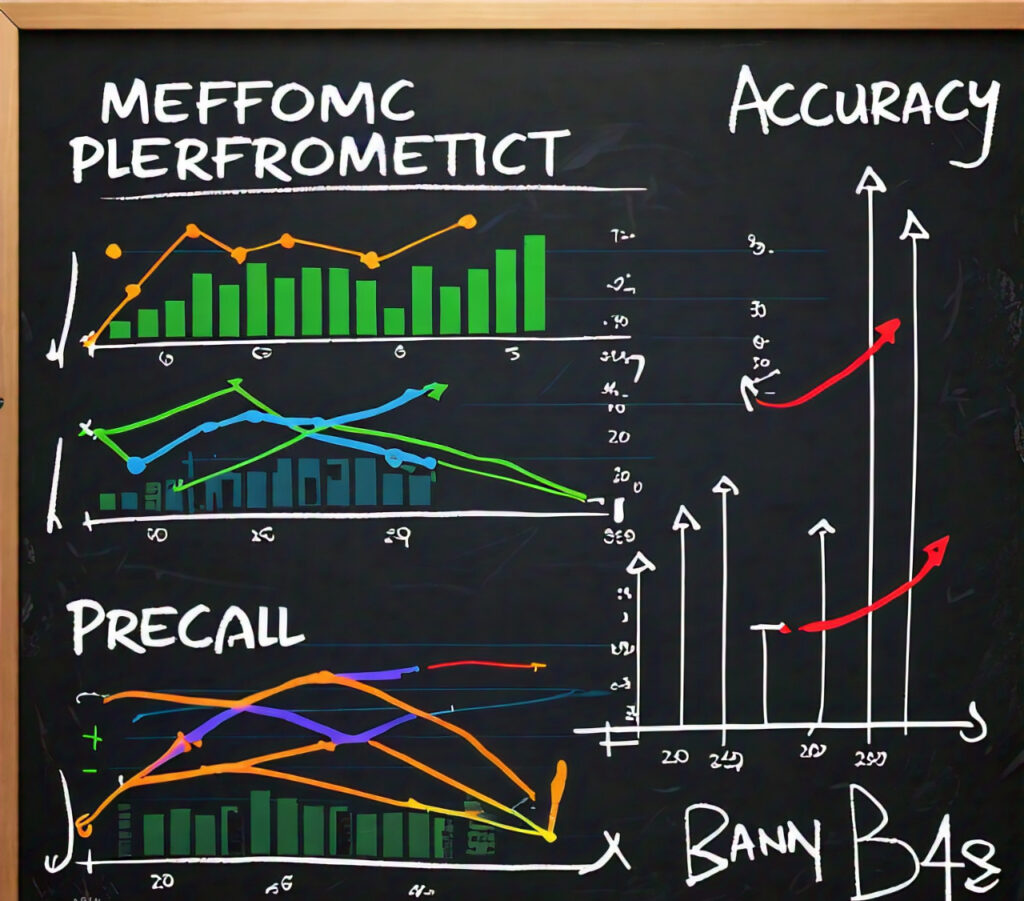In recent years, Decentralized Finance (DeFi) has revolutionized the financial landscape by offering innovative solutions that bypass traditional financial intermediaries. At the heart of this transformation are DeFi trading platforms, which provide users with a decentralized infrastructure to trade a wide array of digital assets. For cryptocurrency traders, the selection of an appropriate DeFi trading platform is crucial as it directly impacts their trading efficiency, profitability, and overall experience.
Evaluating DeFi trading platforms involves scrutinizing various factors, including platform features, fee structures, and performance metrics. With numerous platforms available, each offering unique functionalities and cost structures, traders must carefully assess which platform aligns best with their trading goals and strategies.
Moreover, understanding how to leverage these platforms to implement effective trading strategies, such as yield farming, liquidity provision, and arbitrage, can significantly enhance trading outcomes. Yield farming involves earning rewards by providing liquidity to DeFi protocols, while liquidity provision allows traders to contribute to liquidity pools and earn transaction fees. Arbitrage opportunities, on the other hand, involve exploiting price discrepancies across different platforms for profit.
This guide aims to provide an in-depth comparison of leading DeFi trading platforms, focusing on their features, fees, and performance. Additionally, it will explore how these platforms can be utilized to execute advanced trading strategies effectively. Whether you are a seasoned trader or new to the DeFi space, understanding these aspects will help you make informed decisions and optimize your trading practices.
Understanding DeFi Trading Platforms
What Are DeFi Trading Platforms?
Decentralized Finance (DeFi) trading platforms are blockchain-based systems that facilitate the trading of digital assets without relying on traditional financial intermediaries like banks or brokers. Unlike centralized exchanges, which are controlled by a single entity, DeFi platforms operate on decentralized networks, leveraging smart contracts to automate and secure transactions.
Key Characteristics of DeFi Trading Platforms:
- Decentralization: These platforms run on decentralized networks, which means there is no central authority controlling the operations. This decentralization helps to eliminate single points of failure and reduces the risk of censorship or manipulation.
- Transparency: Transactions on DeFi platforms are recorded on public blockchains, providing transparency and allowing users to verify all actions taken on the platform.
- Interoperability: Many DeFi platforms are designed to be compatible with other DeFi protocols, enabling seamless interaction between different services and applications within the DeFi ecosystem.
- Smart Contracts: The core of DeFi platforms is smart contracts—self-executing contracts with the terms of the agreement directly written into code. These contracts facilitate, verify, and enforce transactions automatically.
Why Choose DeFi Trading Platforms?
DeFi trading platforms offer several advantages over traditional financial systems, making them an appealing choice for many cryptocurrency traders.
Benefits of Decentralization:
- Reduced Reliance on Intermediaries: By eliminating the need for intermediaries, DeFi platforms reduce transaction costs and processing times, allowing for faster and more efficient trading.
- Greater Accessibility: DeFi platforms are accessible to anyone with an internet connection and a compatible wallet, providing financial services to underserved and unbanked populations globally.
- Enhanced Privacy: Many DeFi platforms offer greater privacy compared to traditional exchanges, as users can trade without disclosing personal information.

Innovations in Financial Services:
- Customizable Financial Products: DeFi platforms often provide a range of customizable financial products, such as synthetic assets, stablecoins, and decentralized lending protocols, allowing users to tailor their trading and investment strategies.
- Automated Market Making (AMM): AMM protocols on DeFi platforms enable users to trade assets without relying on order books, using liquidity pools instead. This innovation enhances liquidity and enables continuous trading.
By understanding these foundational aspects of DeFi trading platforms, traders can better appreciate how these platforms fit into the broader financial ecosystem and identify which platforms best meet their needs and objectives.
Platform Comparison: Evaluating Key Factors
Features to Consider
When comparing DeFi trading platforms, it’s crucial to examine the features they offer. These features can significantly impact trading efficiency, user experience, and overall satisfaction.
User Interface and Ease of Use:
- Design and Navigation: An intuitive user interface is essential for a smooth trading experience. Look for platforms with a clean design and straightforward navigation that cater to both novice and experienced traders.
- Customization Options: Some platforms offer customizable dashboards and trading views, allowing users to tailor their interface according to their preferences and trading style.
Supported Assets and Tokens:
- Asset Variety: The range of supported assets and tokens can affect the diversity of trading opportunities. Ensure the platform supports a wide array of cryptocurrencies and DeFi tokens relevant to your trading strategy.
- Integration with Other Protocols: Platforms that integrate with various DeFi protocols can provide access to a broader range of financial products and services.
Advanced Trading Tools and Features:
- Charting Tools: Advanced charting tools and technical analysis features are vital for making informed trading decisions. Look for platforms offering various indicators, chart types, and drawing tools.
- Automated Trading: Some DeFi platforms support automated trading bots or algorithmic trading, which can help execute trades based on predefined criteria and strategies.
Fee Structures
Understanding the fee structures of DeFi trading platforms is essential for evaluating their cost-effectiveness and impact on trading profitability.
Overview of Common Fee Types:
- Trading Fees: These are fees charged per trade, usually as a percentage of the transaction amount. Some platforms offer tiered fee structures based on trading volume or user status.
- Withdrawal Fees: Fees incurred when transferring assets out of the platform. Withdrawal fees can vary depending on the asset and network congestion.
- Gas Fees: On Ethereum-based DeFi platforms, gas fees are associated with executing transactions and smart contracts on the blockchain. These fees can fluctuate based on network activity.
Comparison of Fee Structures:
- Fee Transparency: Compare the transparency of fee structures across platforms. Some platforms provide detailed fee breakdowns, while others may have hidden costs.
- Impact on Trading Profitability: Consider how fees affect your trading strategy and profitability. High fees can erode profits, especially for high-frequency traders or those executing small trades.
Performance Metrics
Evaluating performance metrics helps assess a platform’s reliability and efficiency in executing trades.
Platform Liquidity and Trading Volume:
- Liquidity: High liquidity ensures that trades can be executed quickly and at favorable prices. Platforms with higher liquidity often have narrower bid-ask spreads.
- Trading Volume: Higher trading volumes generally indicate greater market activity and liquidity. Compare trading volumes to gauge the platform’s market presence.
Speed and Reliability of Transactions:
- Transaction Speed: The speed at which transactions are processed can impact trading effectiveness, particularly for time-sensitive trades.
- Uptime and Reliability: Ensure the platform has a strong track record of uptime and reliability to avoid disruptions during critical trading periods.
Historical Performance and Uptime:
- Performance History: Review historical performance metrics and user feedback to gauge the platform’s stability and reliability.
- Incident Response: Examine how the platform has handled past incidents, such as outages or security breaches, and the measures taken to prevent future issues.

Security and Trustworthiness
Security Protocols and Features:
- Smart Contract Audits: Verify if the platform’s smart contracts have been audited by reputable third-party firms to identify and address vulnerabilities.
- Multi-Signature Wallets: Platforms using multi-signature wallets add an extra layer of security by requiring multiple approvals for transactions.
Historical Security Incidents:
- Incident Analysis: Research any past security incidents and how the platform responded. Look for details on how vulnerabilities were addressed and any compensation offered to affected users.
Community Trust and Platform Reputation:
- User Feedback: Review feedback and ratings from the trading community to gauge the platform’s reputation and user satisfaction.
- Community Engagement: Platforms with active communities and transparent communication channels often have higher trust levels among users.
Implementing Trading Strategies on DeFi Platforms
Yield Farming
What is Yield Farming?
Yield farming, also known as liquidity mining, involves earning rewards by providing liquidity to DeFi protocols. Traders supply their assets to liquidity pools, which are then used for various DeFi services, such as lending or trading. In return, they earn rewards in the form of additional tokens or fees generated by the platform.
How to Find and Use Yield Farming Opportunities:
- Research Platforms: Look for DeFi platforms that offer yield farming opportunities. These platforms typically list available farms and their associated yields. Popular platforms include Uniswap, SushiSwap, and PancakeSwap.
- Evaluate Returns: Analyze the annual percentage yields (APYs) offered by different platforms. Higher APYs can be attractive, but they often come with increased risks.
- Assess Risks: Yield farming involves risks such as impermanent loss, smart contract vulnerabilities, and platform-specific risks. Understand these risks and assess the stability and security of the platforms before investing.
Risks and Rewards Associated with Yield Farming:
- Rewards: Potential rewards include high yields and additional tokens from farming incentives. Successful yield farming can lead to significant returns, especially in high-yield pools.
- Risks: Risks include impermanent loss (losses incurred when the value of assets in a liquidity pool changes), smart contract bugs, and platform security issues. Diversifying across different farms and platforms can help mitigate some of these risks.
Liquidity Provision
Understanding Liquidity Pools and AMMs:
- Liquidity Pools: These are pools of funds provided by users (liquidity providers) that facilitate trading on decentralized exchanges (DEXs). Users deposit assets into these pools and, in return, receive a share of the trading fees generated.
- Automated Market Makers (AMMs): AMMs use algorithms to set asset prices based on the supply and demand within liquidity pools. Popular AMMs include Uniswap’s Constant Product Market Maker and Balancer’s Multi-Token Pools.
How to Provide Liquidity and Earn Rewards:
- Choose a Platform: Select a DeFi platform with liquidity pools that match your asset preferences. Ensure the platform has a good reputation and robust security measures.
- Deposit Assets: Provide liquidity by depositing assets into selected pools. You may receive LP (liquidity provider) tokens representing your share of the pool.
- Earn Fees: As a liquidity provider, you earn a portion of the trading fees generated by the pool. These fees are typically distributed based on your share of the pool.
Risks Involved in Liquidity Provision:
- Impermanent Loss: This occurs when the value of the assets in the liquidity pool changes compared to holding them outside the pool. This loss can impact overall returns.
- Smart Contract Risk: Vulnerabilities in smart contracts can lead to loss of funds. Ensure the platform has undergone rigorous audits and security checks.
- Platform Risk: Choose reputable platforms with a history of stable operations to minimize the risk of platform-specific issues.
Arbitrage
What is Arbitrage in DeFi?
Arbitrage involves taking advantage of price discrepancies between different markets or platforms to make a profit. In DeFi, arbitrage opportunities arise when the same asset is priced differently across various exchanges or liquidity pools.
Strategies for Identifying and Executing Arbitrage Opportunities:
- Monitor Price Differences: Use tools and platforms that track price movements across multiple DeFi exchanges. Look for significant price discrepancies that present arbitrage opportunities.
- Automate Trades: Utilize trading bots or automated scripts to execute arbitrage trades quickly. This can help capitalize on price differences before they converge.
- Calculate Costs: Consider transaction fees, gas costs, and slippage when calculating potential profits from arbitrage. Ensure that the profit from the price discrepancy outweighs these costs.
Tools and Platforms to Aid in Arbitrage Trading:
- Arbitrage Bots: Specialized bots can scan multiple platforms and execute trades automatically based on predefined criteria.
- Price Aggregators: Platforms like CoinGecko and CoinMarketCap provide real-time price data across various exchanges, helping identify potential arbitrage opportunities.
- DeFi Analytics Tools: Tools like Dune Analytics and Nansen offer insights into DeFi trading activities and price movements, assisting in finding arbitrage opportunities.
Comparative Analysis of Top DeFi Platforms
To provide a practical understanding of how different DeFi trading platforms stack up, we’ll analyze three leading platforms: Uniswap, SushiSwap, and PancakeSwap. Each of these platforms offers unique features and caters to different trading needs.
Uniswap:
- Features: Uniswap is one of the most well-known decentralized exchanges, utilizing an Automated Market Maker (AMM) model. It supports a wide range of ERC-20 tokens and is known for its user-friendly interface.
- Fees: Uniswap charges a flat fee of 0.30% per trade, which is distributed among liquidity providers. Gas fees on the Ethereum network can add to the overall cost.
- Performance: Known for high liquidity and significant trading volumes. However, high Ethereum gas fees can impact trading costs.
SushiSwap:
- Features: SushiSwap originated as a fork of Uniswap but has introduced additional features, such as staking and yield farming opportunities. It also offers a range of DeFi services beyond just trading.
- Fees: SushiSwap charges a similar trading fee of 0.30% but allocates 0.05% to its native SUSHI token holders. Gas fees are applicable depending on the Ethereum network.
- Performance: SushiSwap has competitive liquidity and trading volumes, with additional incentives for liquidity providers and stakers.
PancakeSwap:
- Features: PancakeSwap operates on the Binance Smart Chain (BSC), offering lower transaction fees and faster processing compared to Ethereum-based platforms. It supports various BEP-20 tokens.
- Fees: PancakeSwap charges a trading fee of 0.20%, with 0.17% going to liquidity providers and 0.03% to the platform’s treasury. Fees are generally lower compared to Ethereum-based platforms.
- Performance: Known for high liquidity and lower fees due to BSC’s efficiency. It has seen rapid growth in trading volumes and user adoption.
Successful Trading Strategies
To illustrate the practical application of DeFi trading strategies, let’s explore two case studies: one involving yield farming and another focusing on arbitrage.
Case Study 1: Yield Farming with Yearn.Finance
- Background: Yearn.Finance offers yield farming opportunities by automatically optimizing yield across various DeFi protocols.
- Strategy: A trader invested in Yearn.Finance’s YFI token and utilized its vaults to earn yield from lending and liquidity provision.
- Outcome: The trader achieved significant returns due to Yearn.Finance’s optimization algorithms, which strategically allocated funds to high-yield opportunities. However, the trader also managed risks related to smart contract vulnerabilities and market fluctuations.
Case Study 2: Arbitrage on Uniswap and SushiSwap
- Background: A trader identified a price discrepancy between ETH on Uniswap and SushiSwap.
- Strategy: The trader bought ETH on Uniswap where the price was lower and simultaneously sold it on SushiSwap where the price was higher.
- Outcome: By executing the trades quickly and efficiently, the trader capitalized on the price difference and made a profit. Transaction fees and gas costs were factored into the overall profit calculation. The trader used arbitrage bots to automate and optimize the process, ensuring timely execution.
Final Recommendations for Choosing a DeFi Trading Platform
When selecting a DeFi trading platform, consider the following recommendations:
- Evaluate Platform Features: Choose a platform that aligns with your trading style and needs, offering the necessary tools and functionalities.
- Compare Fees: Opt for platforms with transparent fee structures that align with your trading volume and frequency.
- Assess Performance: Select platforms with high liquidity and strong performance metrics to ensure efficient trade execution.
- Prioritize Security: Ensure the platform has a solid security track record and employs robust protective measures.
Conclusion
As DeFi continues to reshape the financial landscape, selecting the right DeFi trading platform is crucial for achieving trading success. This guide has highlighted the key aspects to consider when evaluating these platforms, including their features, fee structures, performance metrics, and security protocols.
- Features: The range of features offered by DeFi platforms, such as advanced trading tools and ease of use, can significantly impact your trading experience and effectiveness.
- Fees: Understanding the fee structures—trading, withdrawal, and gas fees—is essential for evaluating the cost-effectiveness of each platform and maximizing profitability.
- Performance Metrics: Assessing platform liquidity, trading volume, transaction speed, and historical performance helps in choosing a platform that supports efficient and reliable trading.
- Security: Prioritizing platforms with robust security measures, such as smart contract audits and multi-signature wallets, ensures the safety of your assets and personal information.
DeFi is an evolving space with continuous innovations and developments. Future trends may include advancements in scalability solutions, new financial products, and enhanced integration with traditional financial systems. Staying informed about these trends is crucial for adapting your trading strategies and leveraging emerging opportunities.






